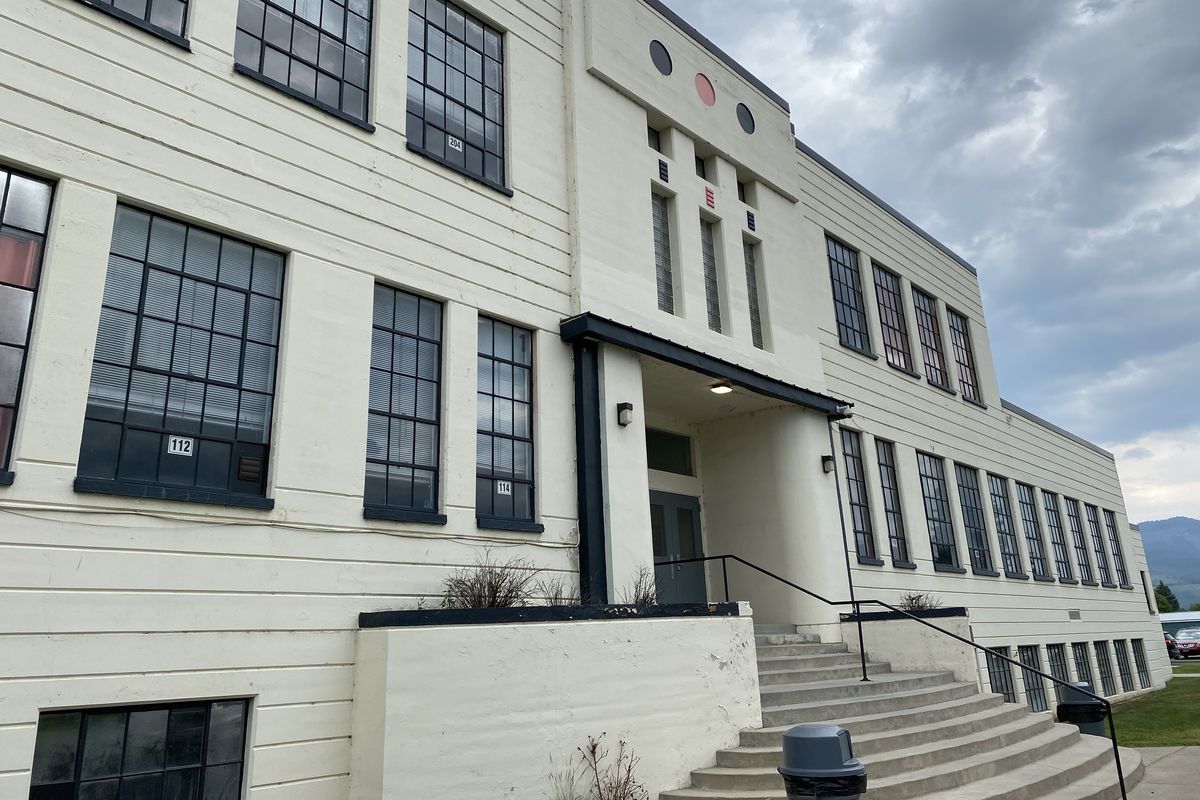Parents worried as West Bonner School District considers closing junior high school amid budget shortfall

PRIEST RIVER, Idaho – A proposal to send junior high students to the high school in West Bonner County School District before funding is in place to repair the aging junior high building has stoked fears from parents that the school board intends to close the school for good.
New superintendent Branden Durst said emphatically that there is no intention to sell Priest River Junior High School, but he would not rule out the possibility of leasing it.
Durst discussed the problems facing the school and fielded questions Monday night from a crowd of parents and community members packed into the cafeteria of Priest River Lamanna High School.
Durst, a former Idaho Freedom Foundation staffer who has expressed controversial views on education, including having public schools compete with private schools for taxpayer funding, was hired in June.
He plans to ask the board how to proceed with the junior high on Wednesday night.
Some community members worried the board is trying to rush a decision before two members are possibly recalled at the end of the month. Chair Keith Rutledge and Vice Chair Susan Brown face a recall election on Aug. 29.
“A lot of people do not trust you, and a lot of people do not trust the sitting board,” said Hailey Scott, a parent of two children in the district.
“I am terrified that you and the board have already decided, and that this thing that’s going to be on the table on Wednesday is going to be another shotgun decision,” she said.
Durst insisted that no decision has been made.
Some board members observed Monday’s conversation, but did not participate.
Built in 1940, the aging junior high needs updating.
The boiler has had problems for a long time and makes heating the building expensive. Failed bonds and levies over the years have made it difficult to replace.
The rural school district is facing a major budget shortfall after a supplemental levy failed in a May election.
A new boiler would cost about $100,000, but Durst said installing it might also require bringing the rest of the building up to code, which could cost $2 million to $3 million. A lot of that would be to make it compliant with the Americans with Disabilities Act.
Community members pushed back on this explanation, saying that retrofitting would only be required if there were structural changes to the building.
Several people suggested installing heat pumps instead, which are more efficient.
The school has other problems besides the boiler, Durst said. And if the boiler breaks during the winter, students cannot remain in the building while it is repaired.
”A decision needs to be made one way or another,” he said.
His suggestion is to temporarily move the 200 junior high students up the road half a mile to the high school at the beginning of the school year while the district does an analysis of the costs. Then they would try to pass a bond in November this year or next May.
Altogether, it would probably take two or three years, he said.
Either way, the district will need some kind of windfall by the end of the school year.
“If there’s not something done that’s pretty drastic, you will not have a functioning school district the next school year,” Durst said.
Durst said he would not campaign for the bond because he can’t legally.
Yet when asked to, he also said he would not delete old social media posts opposing levies and bonds. He said those were past elections and individual cases, and that he has voted for levies in the past.
“I remain neutral,” he said.
Combining the schools could save operational costs, Durst said, but it would also require buying or renting several portable classrooms.
The idea of sending seventh- and eighth-graders to the high school alarmed many parents who were concerned about the ability to keep the students separated and to protect the younger students from bullying or getting pregnant.
Teachers worried the extra upheaval after the COVID pandemic would hurt student performance.
Durst said there are academic advantages to having both schools in one place, since qualified teachers could teach extra subjects to both schools.
The junior high building has historic value to the community, and people said they want it to be preserved.
Gary Go, a retired principal of the junior high, said the building has a bomb shelter in the basement. Structurally, it’s still in great shape.
“That building is tough,” Go said. “We have maintained that building, and you cannot replace that building for what we’ve spent on it.”